#benefits of Kelp
Explore tagged Tumblr posts
Text
#Kelp#Kelp powder#benefits of Kelp#health and wellness#food industry#health & fitness#probiotics#sourcing challenges
0 notes
Note
Howdy there!! If you feel comfortable sharing, what is your favorite portion of the ocean?
I love all parts of the ocean, but I’m especially fond of kelp forests!
They’re really pretty to look at, for one thing. And they’re home to lots of amazing animals: sea stars, leopard sharks, sea urchins, garbaldi fish, and my personal favorite: sea otters!
I’ve actually seen sea otters in the wild before!
Here’s some photos I took of them!



Best fishes,
Finch
12 notes
·
View notes
Text
In the spirit of Earth Day -and totally not because I happened to go down a rabbit hole centering on marine "plant"life- I'd like to take this time to point out how very many types of edible algae there are.
Nori (which is what California likes to put inside their sushi -the heretics they are), is made of various types of edible red algae. It is also used in foods like nori chicken (try it, it's good), kaki mochi/arare/mochi crunch (found here in Hawaii in the snacks aisle at Walmart), furikake (seasoning), and much more.
Wakame, a brown algae, is used in miso soup and other dishes (or just eat it on its own, I know I would) is high in various minerals, mainly manganese and sodium. It's also yummy, and cronchy. Imagine a pickle that isn't necessarily sour. But like, in the vague shape of a noodle. I recommend it. Highly.
Grapestone is a red algae that can be cooked up like in stir fry or in a soup, and apparently tastes like oysters. It can be fished, but harvest responsibly.
Sea grapes! C. Lentillifera is a cronchy algae that reportedly pops like caviar! I want to try it myself. Apparently umami.
Giant kelp. You can eat it, and it's hot a bunch of nutrients making it suitable as a dietary supplement.
Sea lettuce. Apparently it's a green algae. Though it may contain toxic heavy metals depending on where it was harvested from.
There are many more. Seaweed farming is a carbon-negative affair. But it can have side effects depending on how it is done. For example, wakame seaweed is invasive in the USA and New Zealand.
#earth day#seaweed#there are many benefits to being a marine biologist#kelp noodles#call me a sea urchin#i swear i could become a vegetarian if there were enough seaweed to feed me. you don't understand how much i love seaweed#munchin algae n#eating rocks
2 notes
·
View notes
Text
Welcome to the raft, Opal! ✨

We asked, and you answered.
🗳️Thanks to nearly 30,000 of you who voted in our online poll, we’re otter-ly excited to introduce our newest southern sea otter, Opal.
🦦Our team is already hard at work training Opal to join Ivy, Selka, and Ruby on exhibit.
💙They describe Opal as smart, sassy, confident, and protective–an otter that watches out for her raft. 💎 We can hardly wait for you to meet this gem; stay tuned for updates on the timeline for her official debut!

In addition to enchanting visitors and showing off for the exhibit live cam, Opal has a big part to play in the conservation of her species. Opal may act as a surrogate mother to orphaned sea otter pups as part of our sea otter surrogacy program. Though Opal was deemed unreleasable by the U.S. Fish and Wildlife Service after she was rescued as a stranded pup, she may give young pups a second chance by teaching them the skills they need to survive in the wild, like grooming and foraging.
Our work with sea otters has a real impact on their survival—and the vital coastal habitats they call home—as the two are inextricably linked. The sea otter is a keystone species, which means that the health of sea otters is a good indication of the health of other species and ecosystems nearby.

By releasing their adoptive pups back into the wild, our sea otter surrogate moms help restore California’s treasured kelp forests, keeping them healthy and thriving! Learn about the history of our Sea Otter Program and how protecting this beloved species has enormous environmental benefits for California’s coastal ecosystems.
#team opal has triumphed#otterly opalescent#gem of the kelp forest#keystone queen#monterey bay aquarium#ocean#sea otters
2K notes
·
View notes
Text
Humans are often inclined to build seawalls to protect coastal communities from encroaching oceans, but those require constant, expensive maintenance. And in fact, the way we’re changing land, rivers, and climate—and even the seawalls themselves—are undermining natural protections, such as tidal marshes, barrier islands, coral reefs, seagrass beds, dunes, gravel beaches, and kelp and mangrove forests. If left intact, these natural communities can slow fresh and tidal water, acting as a buffer, providing flexible and resilient protection for human communities. They provide multiple co-benefits, and even have the ability to sustain themselves. With these abilities, they can reduce by half the number of lives and properties at risk from storm surges and sea-level rise, according to a study in Nature Climate Change. Unlike seawalls, tidal marshes have a superpower against sea-level rise. It’s not just that they are a buffer between the water and human infrastructure, sapping energy from storm surges and blocking the highest tides. Marshes can actually grow vertically, keeping pace with sea-level rise by trapping sediment in their vegetation, which decomposes and then regrows. To perform this trick, they need three ingredients: sediment, space, and time.
[...]
Broadly speaking, human development has erased many of water’s slow phases—floodplains, meadows, forests, and wetlands, such as tidal marshes. For example, humans have eradicated 87 percent of the world’s wetlands. What water wants, say the detectives, is a return of these slow phases, an approach I think of as the “Slow Water Movement.” Slow water approaches are unique to each place, work with local systems, are distributed rather than centralized, are socially just, and empower and engage the local community. They also provide multiple benefits beyond buffering us from flood and drought, including carbon storage and homes for threatened plants and animals.
29 November 2022
400 notes
·
View notes
Text
Dandelion News - February 1-7
(sorry it’s late, I’ve had pneumonia. between fever and meds, today was the first day in over a week I could even think)
Like these weekly compilations? Tip me at $kaybarr1735 or check out my Dandelion Doodles!
1. These solar streetlights can withstand Category 5 hurricanes

“[The solar-powered streetlights] can identify potential problems before an outage occurs, identify current outages without the need for customer reporting, and allow for remote control of brightness settings. The streetlights are built to remain operational even during widespread power outages.”
2. 15 Democratic state AGs stand by gender-affirming care

“"Federal funding to institutions that provide gender-affirming care continues to be available, irrespective of President Trump’s recent Executive Order," the attorneys general say. […] “Health care decisions should be made by patients, families, and doctors, not by a politician trying to use his power to restrict your freedoms.”
3. India doubles tiger population in a decade
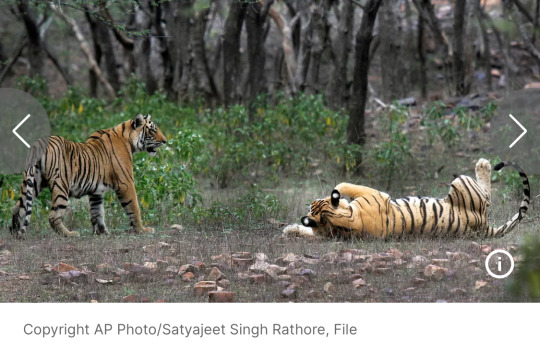
“[India has protected] the big cats from poaching and habitat loss, ensuring they have enough prey, reducing human-wildlife conflict, and increasing living standards for communities near tiger areas.”
4. A North Carolina wildlife crossing will save people. Can it save the last wild red wolves too?

“There are thought to be fewer than 20 red wolves left in the wild[…. S]tate agencies and nonprofit groups [plan to] rebuild a 2.5-mile section of the highway with fencing and a series of culverts, or small underpasses, to allow red wolves – as well as black bears, white-tailed deer and other animals – to pass safely underneath traffic.”
5. Merrimack Valley public transit system will keep bus fares free
“[… C]ollecting fares [used to] cost MeVa about $300,000 a year to maintain fare boxes, pay staffers and afford insurance. Since going fare free in 2022, the report found ridership increased 60% from pre-pandemic levels[….] The program is now funded by state allocated funds, including money from the so called “millionaire’s tax.””
6. Health care is key for youths getting out of prison. A new law helps them get it
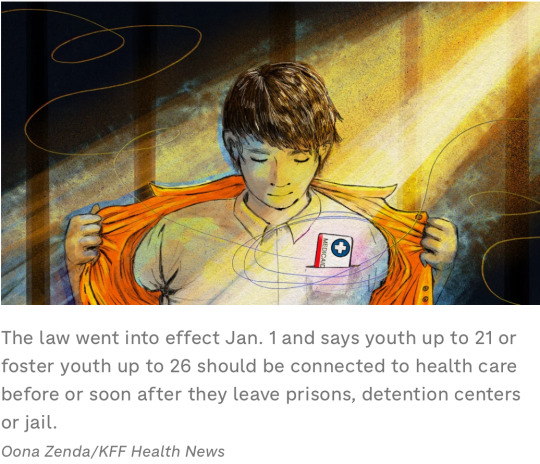
“[The new law] requires all states to provide medical and dental screenings to Medicaid- and CHIP-eligible youths 30 days before or immediately after they leave a correctional facility. Youths must continue to receive case management services for 30 days after their release.”
7. World’s smallest otter makes comeback in Nepal after 185 years
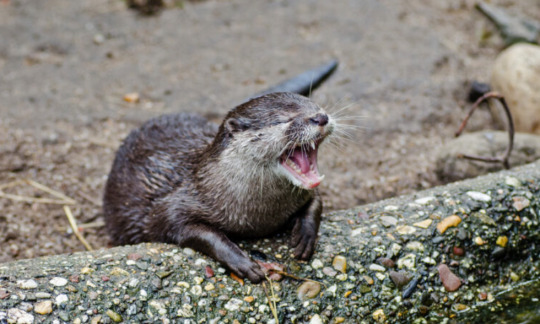
“Scientists have for the first time in 185 years confirmed the presence of the Asian small-clawed otter in Nepal[….] The last time the […] the smallest of the world’s 13 known otter species, was recorded by scientists in Nepal was in 1839.”
8. B.C.'s smallest First Nation has big plans for a 'stewardship' economy
“The Kwiakah Centre of Excellence will be the base for a dedicated research station, an experimental kelp farm, the nation’s regenerative forestry operations and its territorial Indigenous guardian, or Forest Keepers, program[…. R]esults will include a 100-year management plan that integrates climate, salmon, kelp, and soil research to protect territorial waters and remaining old growth forests.”
9. Glades County schools deploy 13 new Blue Bird electric school buses

“The students at the Glades County school district will directly benefit from the cleaner, quieter rides, and operational cost savings that electric school buses provide[, as well as] the addition of much-needed air conditioning in the new school buses. Until now, only three buses in the district provided air conditioning[….]”
10. e.l.f. Beauty CEO defends DEI: 'Our diversity is a key competitive advantage'
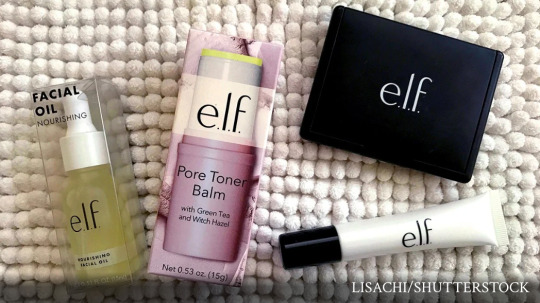
“The cosmetics company recently held that it would not nix its DEI initiatives[….] "Our mission is to make the best of beauty accessible to every eye, lip and face," [CEO] Amin said. "One of the best ways we know how to live that mission is to have an employee base that reflects the community that we serve."”
January 22-28 news here | (all credit for images and written material can be found at the source linked; I don’t claim credit for anything but curating.)
#hopepunk#good news#nature#hurricane#infrastructure#solar#us politics#healthcare#gender affirming care#india#tiger#conservation#animals#endangered species#red wolf#wolf#public transit#anti capitalism#prison#medicaid#youth#otter#nepal#world news#indigenous#canada#florida#electric vehicles#dei#cosmetics
148 notes
·
View notes
Text
𝐬𝐞𝐚𝐥 𝐲𝐨𝐮 𝐥𝐚𝐭𝐞𝐫 | 𝐚𝐥𝐞𝐱 𝐚𝐥𝐛𝐨𝐧

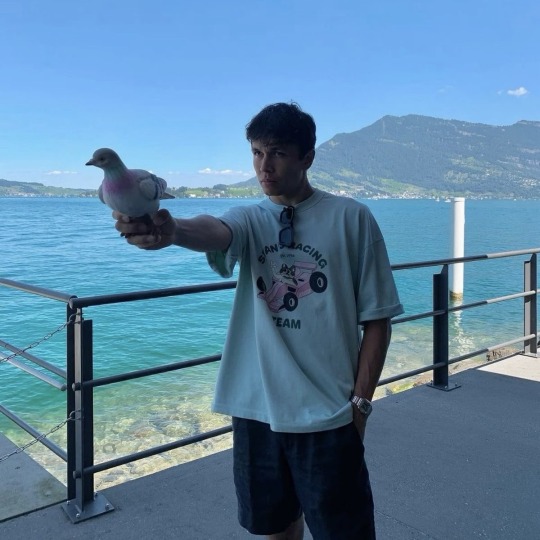

summary: alex makes the worst first impression. you try to stay mad at him, no matter how badly he tries to make it up to you.
pairing: alex albon x seal specialist fem!black!reader
genre: smau.
status: completed.
from, serene: i don’t know how i thought of this idea, it just happened. do not fear, i have the whole thing written i just have to finish formatting the second part. this is actually an anon request, and two of my moots were complaining about the lack of alex albon works…so i took matters into my own hands. happy reading, loves xxx
��� join taglist | feedback & requests | upcoming chapters | table of contents | next ↻

chapter one: SEAK KELP (SEEK HELP) | a random man breaks your phone and runs away before you can even yell at him. he becomes your archenemy when you learn that you lost hundreds of photos of your children. and by “your children”, you mean pups—seal pups.
chapter two: SEAL OF APPROVAL | alex tries to bribe you into giving him a second chance. you accept the bribe—but, only because it will benefit the seals. definitely not because you want to see him again, or anything.

general taglist (ask to join):
@saintslewis/@cherry2stems/@lorarri/@mindless-rock/@biancathecool
@barnestatic/@darleneslane/@lovingaphroditesworld/@smoothopz/@vetteltea
@tallrock35/@spideybv28/@loomiscorpse/@hiireadstuff/@namgification
@gg-trini/@multi-fandom-rando/@landoslutmeout/@love-simon/@iloveyou3000morgan/
@rexit-mo/@oscahpastry/@sweatrevenge5436-blog/@bokutos-babyowl/@oliviah-25
@evermoreandroyalblue/@riveristhebest1/@xylinasdiary/@ashiekins/@flowergirl1134
@hearts4robs/@c-losur3/@bloodyymaryyy/@awritingtree/@lammys-thinking

© httpsserene 2024 — photos in header from pinterest. do not re-upload.
#f1 x reader#f1 smau#f1 x black!reader#alex albon smau#alex albon x reader#alex albon x black!reader#alex albon fanfic#alex albon fluff#f1 fluff#alex albon x you#alex albon imagine#alex albon x y/n#serene’s chapters.#⋆⭒˚。⋆. series special: formula 1#♡ ༘*.゚ love interest: aa.
309 notes
·
View notes
Text
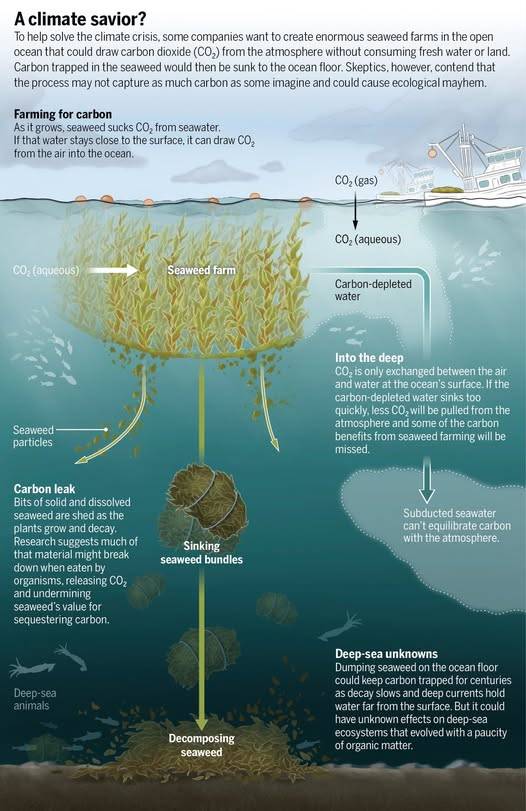
Sinking Seaweed:
An ambitious strategy aims to cool the planet by dumping farmed seaweed on the sea floor. Will it work?
Off the coast of Santa Barbara, California—The waters of California’s Santa Barbara Channel seem like a place where seaweed would flourish. Sleek gangs of bottlenose dolphins flash through the waves. A minke whale surfaces briefly. Phytoplankton tints the ocean jade green. The sea is burgeoning with life. And yet, when Kristen Davis, a physical oceanographer at Stanford University, rises from the depths after inspecting an experimental farm of giant kelp (Macrocystis pyrifera), the news is discouraging. “They’re trying to grow,” Davis says as she bobs in the water, her tone suggesting the kelp isn’t exactly thriving. Davis is there to study the potential benefits and risks of a controversial idea: growing seaweed to fight climate change. The concept has generated enthusiasm among entrepreneurs, philanthropists, and some scientists. They envision vast seaweed farms floating in the open ocean, where plants such as kelp would be grown and then sunk thousands of meters to the ocean floor, entombing the carbon for centuries...
Read more:
https://www.science.org/content/article/can-dumping-seaweed-sea-floor-cool-planet-some-scientists-are-skeptical
344 notes
·
View notes
Note
What does the yotici life cycle look like now?
Fairly similar, here's a generalized idea

I Did kind of drop the sessile+asexual polyp mobile+sexual fish alternating generations because it doesn't Really change anything besides sounding vaguely interesting. Fish reproduction is wild enough as-is.
Their eggs are laid in a stringy mass that requires a root to the sea floor (coral, tough kelps, rocks, sticks, etc) and light currents to keep them oxygenated. These egg masses are strong and can bend and sway fairly significantly without coming apart, but will be broken by strong currents and require a sheltered environment to survive. This is the basis of a Garden, an engineered ecosystem designed to protect the eggs, provide substantial and consistent nourishment for the young and resting places and shelter for adults, and additionally function as cultural and social centers.
Larvae are tiny and born with a yolk sac attached to sustain them. They metamorphose into a 'predatory' phase in which they feed on zooplankton and organic debris. These phases are tiny and poor swimmers, wholly reliant on the sheltered environment of the garden for safety and consistent food sources. Those swept out have very little chance of longterm survival. The VAST majority of yotici that hatch at all die in their larval stages.
Most of their anatomy is fully developed as a 'yotling', in which they are much stronger swimmers, school together, and are primarily predatory. Yotlings feed on plankton and other small animals, but their most important food source is their own species' eggs. This is a natural behavior for yotici, and much of the function of the garden is to provide this dependable, clustered food source for their young. The survival benefits of most of their reproductive output being sacrificed to these viable young with a fairly strong chance of survival vastly outweigh the loss, given the vast majority of yotici larvae who hatch to begin with die without ever reaching this phase. Yotlings have much lower mortality rates than the larvae, but a majority will die to predation. They're also frequent bycatch in fisheries and are widely eaten by landdwelling peoples. During the yotling phase, they're about 4-8 inches long.
Their beak starts to develop in the juvenile stage, during which they are 'weaned' out of predatory behavior and start consuming algae and marine plants. They instinctively school around adult yotici and follow them to food sources, usually eating algae that grows around the tougher foods the adults can handle. This tends to be the point in which active parental protection begins, but few yotici cultures conceptualize these juveniles as full people or develop personalized bonds with them, as their mortality rate is still fairly high. During the juvenile phase, they're about 8-14 inches long.
A yotici 'child' has all its base adult anatomy developed, including its tentacles, and looks like a miniature adult. They can eat tougher foods and join the adults in consuming seagrass. This is the point in which they are semi-equivalent to a human infant, rapidly learning and picking up on language and beginning to communicate. Fully active parental care and bonding will occur during this period (the Exact cultural marker of when this starts can vary) and they are conceptualized as people. Diminishingly few yotici actually survive to this phase, but those who do have a very good chance of lasting to adulthood. The child phase starts at about 1-2 ft in length.
At this point they grow steadily until sexual maturity, and will continue to grow (much, much more slowly) throughout the rest of their lives. Sexual maturity takes a VERY long time, usually about 20 years from hatching. An adult yotici generally ranges in size from 12-18 ft, with outstanding or very long lived individuals passing 25 (the World Record would be in the mid 30 ft range). A yotici who survives to reproductive adulthood has excellent chances at a long life, and yotici are by far the longest living sophonts. A lucky individual can crest 200 years.
#Should note that when I make changes for realism it's not because I think worldbuilding should be hyper realistic to be good but because#like. It's fun for me. I like having to think about these things and having to learn and problem solve to conform to Mostly hard#realism. I only drop things when they're not fun for me and/or I like another option better.#And I let a lot of other things be fully unrealistic with like. A little grounding when adjusting for realism would Not be fun for me#Like the three moons is not even slightly realistic (in that it has like no effects whatsoever on this world which is 99.999% earthlike)#but I like it and think it's fun to have the wrinkle of Three Moons and think about how that could affect cultural interpretations of the#moon so I keep it#etc#yotici
120 notes
·
View notes
Text
Superfoods you should incorporate in your diet:
Superfoods are nutrient-dense foods that are considered beneficial for your health due to their high concentration of vitamins, minerals, antioxidants, and other beneficial compounds.
Combine these superfoods with a variety of other whole foods to ensure you're getting a wide range of nutrients. Also, be mindful of portion sizes and any individual dietary restrictions or allergies you may have.
Berries: Blueberries, strawberries, raspberries, and other berries are rich in antioxidants, fiber, and vitamins.
Leafy greens: Spinach, kale, Swiss chard, and other leafy greens are packed with vitamins, minerals, and fiber. They are low in calories and provide important nutrients like vitamin K, vitamin C, and folate.
Cruciferous vegetables: Broccoli, cauliflower, Brussels sprouts, and cabbage are part of the cruciferous vegetable family. They contain compounds that may help reduce the risk of certain cancers.
Nuts and seeds: Almonds, walnuts, chia seeds, flaxseeds, and hemp seeds are excellent sources of healthy fats, protein, fiber, and various vitamins and minerals.
Fish: Fatty fish like salmon, sardines, and mackerel are rich in omega-3 fatty acids, which are beneficial for heart health and brain function.
Whole grains: Quinoa, brown rice, oats, and whole wheat are examples of whole grains that provide fiber, vitamins, and minerals.
Legumes: Beans, lentils, chickpeas, and other legumes are high in fiber, protein, and various nutrients. They are also a good source of plant-based protein.
Turmeric: This spice contains curcumin, a compound with potent anti-inflammatory and antioxidant properties.
Green tea: Green tea is rich in antioxidants called catechins and is believed to have various health benefits, including improved brain function and a lower risk of certain diseases.
Dark chocolate: Dark chocolate with a high cocoa content (70% or higher) is a source of antioxidants and may have positive effects on heart health and mood.
Avocado: Avocados are rich in healthy fats, fiber, and various vitamins and minerals. They also provide a good source of potassium.
Greek yogurt: Greek yogurt is a protein-rich food that also contains beneficial probiotics, calcium, and vitamin B12.
Sweet potatoes: Sweet potatoes are packed with vitamins, minerals, and fiber. They are an excellent source of beta-carotene, which is converted into vitamin A in the body.
Garlic: Garlic contains sulfur compounds that have been associated with potential health benefits, including immune support and cardiovascular health.
Ginger: Ginger has anti-inflammatory properties and is commonly used to aid digestion and relieve nausea.
Seaweed: Seaweed, such as nori, kelp, and spirulina, is a rich source of minerals like iodine, as well as antioxidants and omega-3 fatty acids.
Pomegranate: Pomegranates are packed with antioxidants and are believed to have anti-inflammatory properties. They are also a good source of vitamin C and fiber.
Cacao: Raw cacao is the purest form of chocolate and is rich in antioxidants, flavonoids, and minerals. It can be enjoyed as nibs, powder, or in dark chocolate form.
Quinoa: Quinoa is a gluten-free grain that provides a complete source of protein, along with fiber, vitamins, and minerals.
Extra virgin olive oil: Olive oil is a healthy fat option, particularly extra virgin olive oil, which is high in monounsaturated fats and antioxidants.
Chia seeds: Chia seeds are a great source of fiber, omega-3 fatty acids, and antioxidants. They can be added to smoothies, yogurt, or used as an egg substitute in recipes.
Beets: Beets are rich in antioxidants and are known for their vibrant color. They also contain nitrates, which have been shown to have beneficial effects on blood pressure and exercise performance.
Matcha: Matcha is a powdered form of green tea and is known for its high concentration of antioxidants. It provides a calm energy boost and can be enjoyed as a tea or added to smoothies and baked goods.
Algae: Algae, such as spirulina and chlorella, are nutrient-dense foods that are rich in protein, vitamins, minerals, and antioxidants. They are often consumed in powdered or supplement form.
Fermented foods: Fermented foods like sauerkraut, kimchi, kefir, and kombucha are rich in beneficial probiotics that support gut health and digestion.
Maca: Maca is a root vegetable native to the Andes and is often consumed in powdered form. It is known for its potential hormone-balancing properties and is commonly used as an adaptogen.
Goji berries: Goji berries are small red berries that are rich in antioxidants, vitamins, and minerals. They can be enjoyed as a snack or added to smoothies and oatmeal.
Hemp seeds: Hemp seeds are a great source of plant-based protein, healthy fats, and minerals like magnesium and iron. They can be sprinkled on salads, yogurt, or blended into smoothies.
Moringa: Moringa is a nutrient-dense plant that is rich in vitamins, minerals, and antioxidants. It is often consumed as a powder or used in tea.
Mushrooms: Certain mushrooms, such as shiitake, reishi, and maitake, have immune-boosting properties and are rich in antioxidants. They can be cooked and added to various dishes.
#health tips#healthy lifestyle#health and wellness#nutrients#healthy life tips#healthy life hacks#healthy diet#level up journey#high value mindset#health is wealth#levelupjourney#glow up tips#glow up#nutrition#healthy living
2K notes
·
View notes
Text
The Best News of Last Week
⚡ - Charging Towards a More Electrifying Future
1. The Kissimmee River has been brought back to life—and wildlife is thriving

The Kissimmee River in Florida was straightened in the 1960s, causing a sharp decline in wildlife and ecological problems. But in the 1990s, a $1 billion restoration project was initiated to restore the river's natural state.
Today, nearly half of the river has been restored, wetlands have been reestablished and rehydrated, and wildlife has returned, including rare and threatened species. Already the biological impact of the project has become clear. As the wetlands have come back, so have the birds.
2. Plastic wrap made from seaweed withstands heat and is compostable
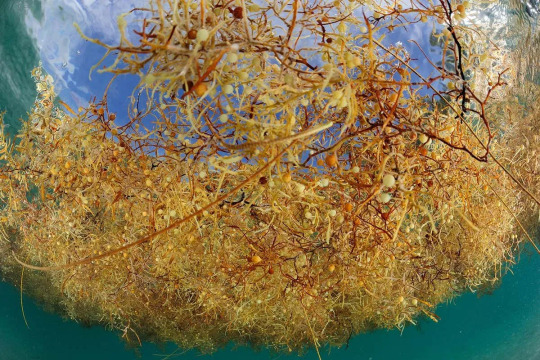
A cling film made from an invasive seaweed can withstand high temperatures yet is still easily compostable. The material could eventually become a sustainable choice for food packaging.
Scientists started with a brown seaweed called sargassum. Sargassum contains long, chain-like molecules similar to those that make up conventional plastic, which made it a good raw material. The researchers mixed it with some acids and salts to get a solution full of these molecules, then blended in chemicals that thickened it and made it more flexible and pliable.
3. An Eagle Who Adopted a Rock Becomes a Real Dad to Orphaned Eaglet

Murphy, a bald eagle that had been showing fatherly instincts, has been sharing an enclosure with an eaglet that survived a fall from a tree during a storm in Ste. Genevieve. Murphy, his rock gone by then, took his role as foster parent seriously. He soon began responding to the chick’s peeps, and protecting it.
And when, as a test, the keepers placed two plates of food in front of the birds — one containing food cut into pieces that the chick could eat by itself, and another with a whole fish that only Murphy could handle — the older bird tore up the fish and fed it to the eaglet.
4. World's largest battery maker announces major breakthrough in energy density

In one of the most significant battery breakthroughs in recent years, the world’s largest battery manufacturer CATL has announced a new “condensed” battery with 500 Wh/kg which it says will go into mass production this year.
“The launch of condensed batteries will usher in an era of universal electrification of sea, land and air transportation, open up more possibilities of the development of the industry, and promote the achieving of the global carbon neutrality goals at an earlier date,” the company said in a presentation at Auto Shanghai on Thursday.
This could be huge. Electric jets and cargo ships become very possible at this point.
5. Cat with '100% fatal' feline coronavirus saved by human Covid-19 medicine

A beloved household cat has made an “astonishing” recovery from a usually fatal illness, thanks to a drug made to treat Covid-19 in humans – and a quick-thinking vet.
Anya���, the 7-year-old birman cat, was suffering from feline infectious peritonitis (FIP), a “100% fatal” viral infection caused by feline coronavirus. That was, until Auckland vet Dr Habin Choi intervened, giving Anya an antiviral used to treat Covid-19 called molnupiravir.
6. Kelp forests capture nearly 5 million tonnes of CO2 annually
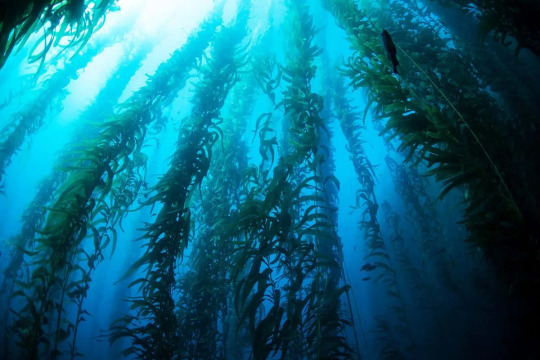
Kelp forests provide an estimated value of $500 billion to the world and capture 4.5 million tonnes of carbon dioxide from seawater each year. Most of kelp’s economic benefits come from creating habitat for fish and by sequestering nitrogen and phosphorus.
7. Medical Marijuana Improved Parkinson’s Disease Symptoms in 87% of Patients

Medical cannabis (MC) has recently garnered interest as a potential treatment for neurologic diseases, including Parkinson's disease (PD). 87% of patients were noted to exhibit an improvement in any PD symptom after starting medical cannabis. Symptoms with the highest incidence of improvement included cramping/dystonia, pain, spasticity, lack of appetite, dyskinesia, and tremor.
----
That's it for this week :)
This newsletter will always be free. If you liked this post you can support me with a small kofi donation:
Buy me a coffee ❤️
Also don’t forget to reblog
817 notes
·
View notes
Text
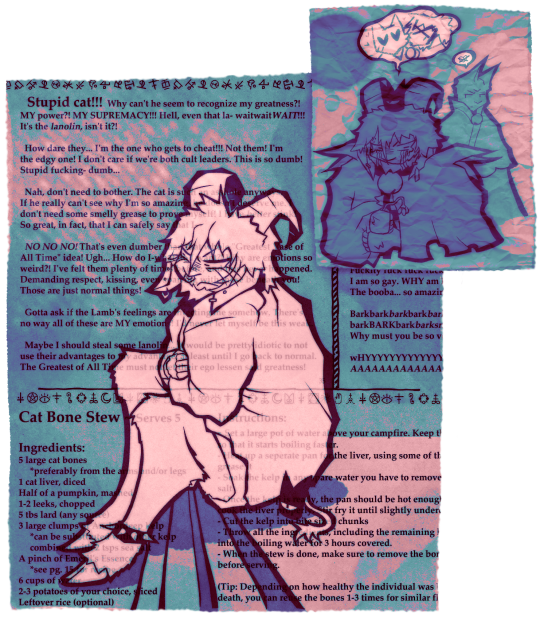
cotltober day 21 lanolin
the goat is pretty upset that they dont produce lanolin in general (a huge part of why their wool is so itchy and dry)
how are they supposed to benefit off of it easily if theyre not the one making it??????????????????
full text:
Stupid cat!!! Why can't he seem to recognize my greatness?! MY power?! MY SUPREMACY!!! Hell, even that la- waitwaitWAIT!!! It's the lanolin, isn't it?!
How dare they... I'm the one who gets to cheat!!! Not them! I'm the edgy one! I don't care if we're both cult leaders. This is so dumb! Stupid fucking- dumb...
Nah, don't need to bother. The cat is such an asshole anyways. If he really can't see why I'm so amazing, he doesn't deserve me. I don't need some smelly grease to prove myself! I have better stink! So great, in fact, that I can safely say that I-
NO NO NO! That's even dumber than that whole "Greatest Vase of All Time" idea! Ugh... How do I-what do I want?! Why are emotions so weird?! I've felt them plenty of times before, and this never happened. Demanding respect, kissing, even sparring with those beneath you! Those are just normal things!
Gotta ask if the Lamb's feelings are infecting me somehow. There's no way all of these are MY emotions! I'd never let myself be this weak.
Maybe I should steal some lanolin... It would be pretty idiotic to not use their advantages to my advantage, at least until I go back to normal. The Greatest of All Time must not let their ego lessen said greatness!
_____________________ Cat Bone Stew ~ Serves 5
Ingredients: 5 large cat bones *preferably from the arms and/or legs 1 cat liver, diced Half of a pumpkin, mashed 1-2 leeks, chopped 5 tbs lard (any source) 3 large clumps of Anchordeep kelp *can be substituted with other kelp combined with 2 tsps sea salt A pinch of Emeril's Essence *see pg. 15 for recipe 6 cups of water 2-3 potatoes of your choice, sliced Leftover rice (optional)
Instructions:
Set a large pot of water above your campfire. Keep the lid on so that it starts boiling faster.
Heat up a separate pan for the liver, using some of the lard to grease it
Soak the kelp in any spare water you have to remove excess salt
Once the kelp is ready, the pan should be hot enough to cook the liver properly. Stir fry it until slightly under cooked
Cut the kelp into bite sized chunks
Throw all the ingredients, including the remaining lard,into the boiling water for 3 hours covered.
When the stew is done, make sure to remove the bones before serving.
(Tip: Depending on how healthy the individual was before death, you can reuse the bones 1-3 times for similar flavor)
_____________________ Fuckity fuck fuck fuck I am so gay. WHY am I so gay The booba... so amazingly (cut off) Barkbarkbarkbarkbarkb barkBARKbarkbarksnarl Why must you be so very (cut off) wHYYYYYYYYYYYYY AAAAAAAAAAAAAA
52 notes
·
View notes
Text
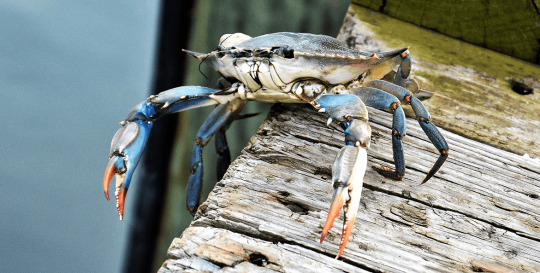

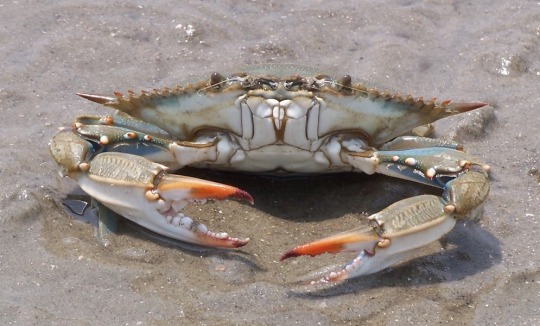
At Last, the Atlantic Blue Crab!
A common sight on dinner tables in Canada, America, and Mexico, the blue crab-- also known as the Atlantic blue crab or the Maryland Blue crab (Callinectes sapidus)-- is native to the the Gulf of Mexico and the Atlantic coast of North America. This species is a bottom dweller, and can occupy a range of habitats from freshwater tributaries to the open bays and gulfs of the ocean itself. At times it may be found at high tide, but most individuals remain submerged at depths up to 36 m (120 ft) deep.
As indicated by its name, the claws and front body of male blue crabs are bright blue. Females are carry a blue tinge, but are largely brown or olive, though the tips of their claws are bright red. Otherwise, the two sexes may be distinguished by the shape of their underside, or "apron"; males have an inverted 'T' shape, while females have a wider, rounder shape. Individuals of both sexes may grow up to 23 cm (9 in) in width, and weigh up to 136 g (0.3 lbs).
Spawning for C. sapidus can occur year-round, but for most populations it peaks in October or November. When females are ready, they travel up estuaries and rivers to where populations of males are more concentrated, and then release pheromones in their urine to attract mates. Male crabs then compete for access, and guard their chosen mates fiercely for up to a week. During this time, the female molts, at which point the male fertilizes her. Afterwards, she may retain her mate's sperm for up to a year, during which time she returns to saltier waters. A female can fertilize 2 million eggs at a time, and will carry them in a mass under her abdomen until they hatch, about a week after fertilization. She may do this as many as 4 times throughout a single mating season.
Once hatched, Atlantic blue crab larvae are released into the ocean. Each larvae spends 30-40 days going through seven larval stages known as zoea; these stages are similar to the instars of a larval insect. However, zoea have hard shells and must molt at each stage of development. After the initial zoea stages, juvenile C. sapidus enter the megalops stage, which lasts 6-20 days. During this time juveniles move from the ocean into the estuaries in which they spawned. Finally, they molt into their final form, which resembles an adult-- albeit much smaller. Both males and females continue to molt throughout the year until they reach their full size. In total, both sexes go through about 25 molts each throughout their lives, which spans about 3 years in the wild.
Blue crabs have a wide and varied diet, as they are omnivores. In their larval stages, Maryland blue crabs consume primarily plankton and detritus. Megalops and adults will feed on clams, mussels, and oysters, small fish, kelp, seaweed, carrion, smaller blue crabs, and animal waste. In turn, both juveniles and adults are food for eels, large fish some sharks, stingrays, and humans. In fact, predation upon larval and sub-adult blue crabs is so heavy that, of 8 million eggs released by the mother, only 1 or 2 typically survive to adulthood.
Conservation status: The Maryland blue crab has not been evaluated by the IUCN. However, in recent decades, fisheries have noticed a severe decline in abundance, likely due to over-harvesting and pollution.
If you send me proof that you’ve made a donation to UNRWA or another fund benefiting Palestinians– including esim donations and verified gofundmes– I’ll make art of any animal of your choosing.
Photos
Kim Cover
Lynn Strauss
Jo O'Keefe
#atlantic blue crab#Decapoda#Portunidae#swimming crabs#crabs#decapods#crustaceans#arthropods#marine fauna#marine arthropods#coasts#coastal arthropods#atlantic ocean
99 notes
·
View notes
Note
So, I have some thoughts about Fizz ! I really really hate Fizz's character with all my heart, but it means I also kinda love him by extension xD It figures as what infuriates me so much about him makes him such a real and compelling character.
He radiates all the red flags, he sticks to his own dellusions and hero complex only because he has a noble cause. And then he dare placing himself in a higher moral status when he's able to ressorts to such atrocious acts, only views people through his own benefits, then resorts to such deshumanisation it genuinely disgusts me.
He's a pathetic excuse of a merman , sure he's not pure evil, but he incarnates so much toxicity, cruel and abusive behavior it makes me sick. But it's also handled in such a good and realistic way, as we end up being able to grasp he's psychology and where his coming from. He's despicable yet fascinating, he's like my beloved hated foe xD
A redemption arc with him could be interesting, especially since I think it would be rewarding with Siren's choice to spare his life that he ended up working on himself in order to become a decent dude. But in his current state I would gladly celebrate if he was eaten by a dragon kelp of smth, and had a really painful death xD But yeah the fact that I happen to care so much about his character, even in hate, makes him so great in regards.
I had a lot of fun writing Fizz. I think by default I have a habit of making every character very understandable and likable to some degree. However I’ve found that making HATEABLE characters sets up so many satisfying moments lol.
Thank you for sharing your thoughts! 💖
35 notes
·
View notes
Note
hello! I would like to tell you about my merfolk OC!!
A mermaid with the bottom half of a sea lion. She has a large sea lion tail with flippers that she uses to walk with. She has short, dirty blonde hair. Her bracelets are made by her with string and shells. She is a fisher, and that is how she gets money. She sells fish all over the seas for money. Her parents were killed by poachers, so her life’s mission is to save the merfolk. She lives in a kelp forest with a orca merfolk pod that took her in. She uses her spear as her main weapon, that she made herself. She wears a crop top made from kelp that she made herself.

That’s a drawing of her that I made myself! I like to draw too :3
also I’m like a huge fan or your blog, I think that you’re really cool!
Oh she's the cutest!!!! I think pinniped mermaids are really underrated, and I do mean mermaids and not selkies! Sea lion mermaids even have that added benefit of being able to walk on land which I think is fun and should be utilised more. Like you're doing right here! I must say I love her earthy colour palette -- and are those scars from the poachers? :( Thank cod for those orca merms, huh? I can imagine her zooming among the kelp and then doing that fun thing that sea lions do where they keep their head still while their body is in motion to look at something :D Thanks for sharing her with me!
#sorry that it took me a while to answer this ask; your merm is very cool! i love her hair too :)#and thank you lots!#asks#merfolk#sillyseacreature
10 notes
·
View notes
Note
Hello, I quite like your merfolk designs and the different characters you've come up with. I relate to Runt's fear of the deep ocean and have struggled to even consider learning to swim again. 🌊😨
I've seen some of your smaller merfolk designs, like the latest one of a mothfish mermaid, it then got me thinking about cleaner fish and their clients. I'm going to go a bit speculative biologist here a moment so... I hope you don't mind the rambling. 😅
Since leviathans do or had existed, depending on which world we're looking at, beings of such size may get struggle with cleaning themselves for multiple reasons; like age, missing appendages or just in a hard to reach spot. So, maybe some merfolk evolved to help clean those areas? Various fish have evolved that clean larger fish, sharks, turtles and supposedly even octopi - whose to say something similar couldn't happen with merfolk? Maybe a few of these cleaner merfolk specialise in providing their services towards specific types of large merfolk in exchange for protection or sharing their meal. Maybe some provide information or gossip to the large merfolk about other merfolk or leviathans. (Possibly acting as spies if you want to lean into that.) Maybe a few can sizeshift to fit the needs of their clients, but not getting no where near as big as say Gorm or Cetus. (Although a giant cleaner mer person would be funny to imagine, if their kind can be super tiny in comparison to everyone else.)
Like, just imagine some of your big merguys like Keiki meeting one of these cleaner merfolks and getting the ocean equivalent of a spa treatment! 😄 Is this too silly? IDK.
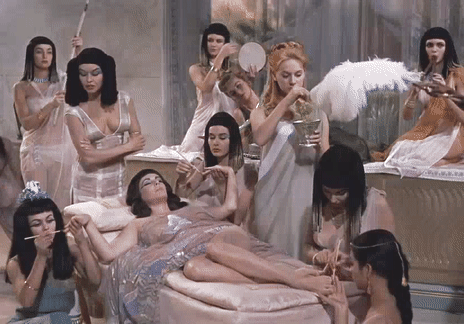
Accck hello, yes I love me a good ramble!! :D
In all my worlds; Jordh (where Merry, Tide and Cetus lives) is the only plausible world for small merfolk, and thus one specialized in cleaning! The leviathans would benefit the most from them given their size and solitary lifestyle! And like you wrote, the cleaners would get protection and food in return! Win-win! Hmm I can imagine smaller merfolk that'd be like companions, always following their leviathan around. And with how the leviathans slowly died out due to an illness, it'd be a very tragic scenario. There's only one left now so I can imagine there'd be fierce competition for him. To his horror because he didn't grow up with having such small mers around. xD
I absolutely love the idea of the little mers spilling all the tea during the appointments! They'll be cleaning their client and be all gossiping like "Oohh I heard Mist got caught sneaking sugar kelp last week! She's been cleaning shells for days as punishment!" xD
And the mental image of a giant cleaner mer cracking their knuckles in a 'time to work' way while the client gulps nervously because that size is Not what they were expecting lol!!
I'm cackling at the gif!! If there were little cleaner merfolk that do this, Keiki would be a regular for sure! He loves a good pampering! Unfortunately for him he'll have to settle for normal cleaner fish. Since the merfolk in his world only come in one form and size-ish! But there's plenty of cleaner fish that specializes in large creatures since the ocean's full of giant sea serpents and more. :3
#Ask#monstergili#merfolk#thanks for the ask!#And I'm so happy you like my mers! :D#I hope you can overcome your fears! But I agree the big deep is spooky xD#.projecting my own fear on my characters pfff
11 notes
·
View notes